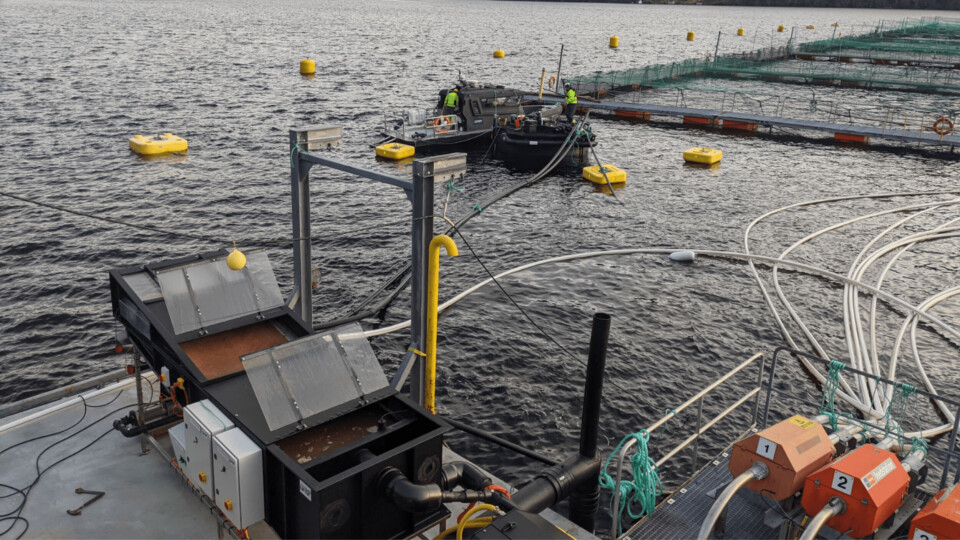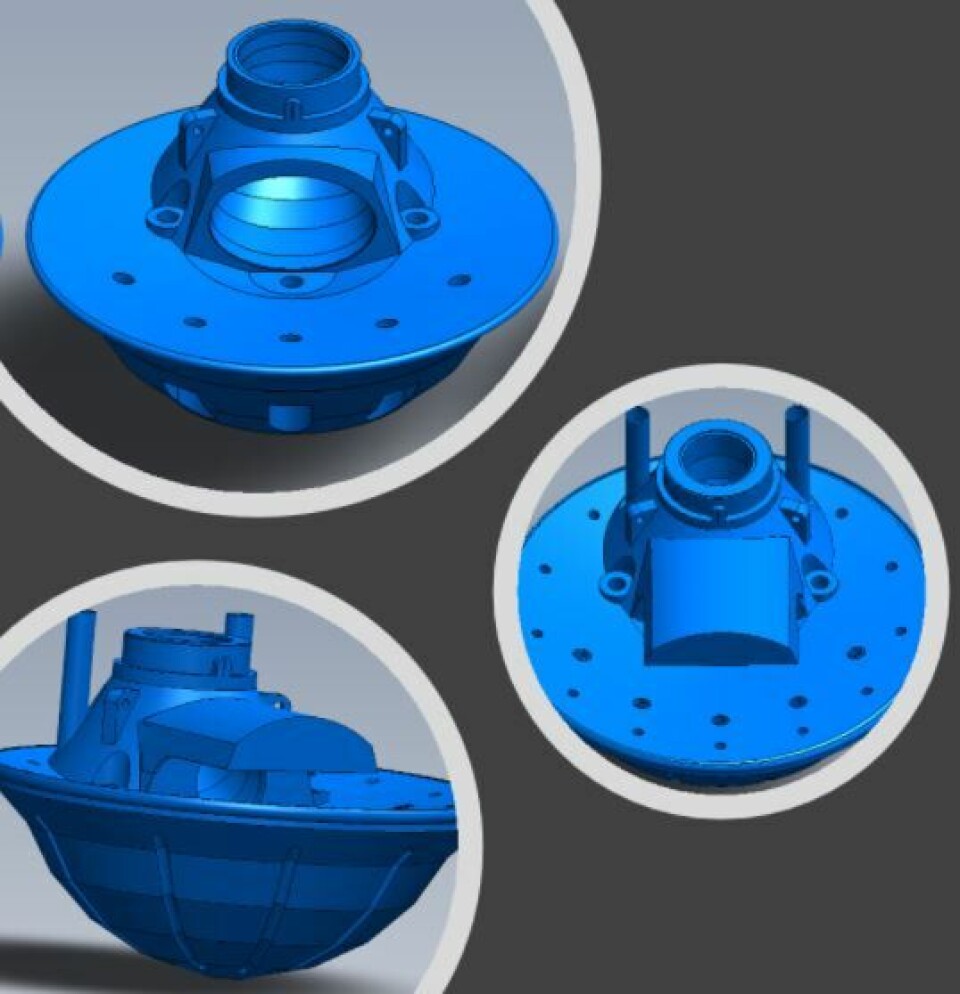
Sludge sucker to be offered to Scottish salmon farmers
A Norwegian company that has introduced the first commercially available technology for collecting sludge from open net salmon farms has earmarked Scotland as its first export market.
Lift Up is best known for its mort collection system, which sucks dead fish into a cone-shaped device and up through a tube, and the sludge system is an evolution of that.
A full-scale pilot project supported by Innovation Norway and salmon farmer Lerøy was started in the summer of 2020 and has provided confirmation of the system’s effectiveness.

Floating tank
The company has developed a patented “Combi-cone”, which pumps both sludge and morts up to a barge. It is used in combination with a cage net that has a finer mesh at the bottom which is designed to catch sludge and channel it down to the Combi-cone.
Sludge is sucked into small holes in the cone and up a pipe, with stop/start every hour. Mortalities go into a larger opening and up a larger pipe, normally once per day. On the barge, the wastewater from both pipes is sent through a filtering system. The outlet from the last filter is sludge with approximately 10% dry matter, which is stored in a floating tank.
When the tank is nearly full, the sludge is pumped into a boat and delivered to a biogas plant for gas production. Lift Up has partner companies which are looking at collecting nutrients such as phosphorous from the sludge and, also, using the sludge to create soil improvement products.
65% effective
Lift Up chief executive Liam Heffernan said the system was currently able to retrieve 650kg of sludge for every tonne of feed given to fish. The company was constantly testing different filter type configurations to improve efficiency, but it was not necessary to remove 100% of the waste from fish.
“What you want to do is reduce the faeces to a level where the seabed organism can thrive and break down this fall-off,” said Heffernan. “That way you get a living sea floor that can thrive, even though you have a big farm with fish located up in the water column.”
Heffernan said potential advantages of sludge collection included making it easier to get new production sites. The downstream effects included the generation of biogas and the creation of extra jobs. Being seen to be taking more care of the seabed might also give the fish farming industry a better public image and / or acceptance by the general public.
Local companies
He added that Lift Up intends to sell its product in Scotland after it gets more sites in operation in Norway which can be used as demonstration sites for other companies, including visitors from Scotland.
The company already has a long-established relationship with Ayrshire net supplier W & J Knox, which markets Lift Up’s mort collector.
“We would need to find local companies to carry out the work that our partners do in Norway,” explained Heffernan. “We would look for companies that know and are known in their area.”
Read more detail on Lift Up’s sludge collection in the current issue of Fish Farming Expert magazine, here.























































